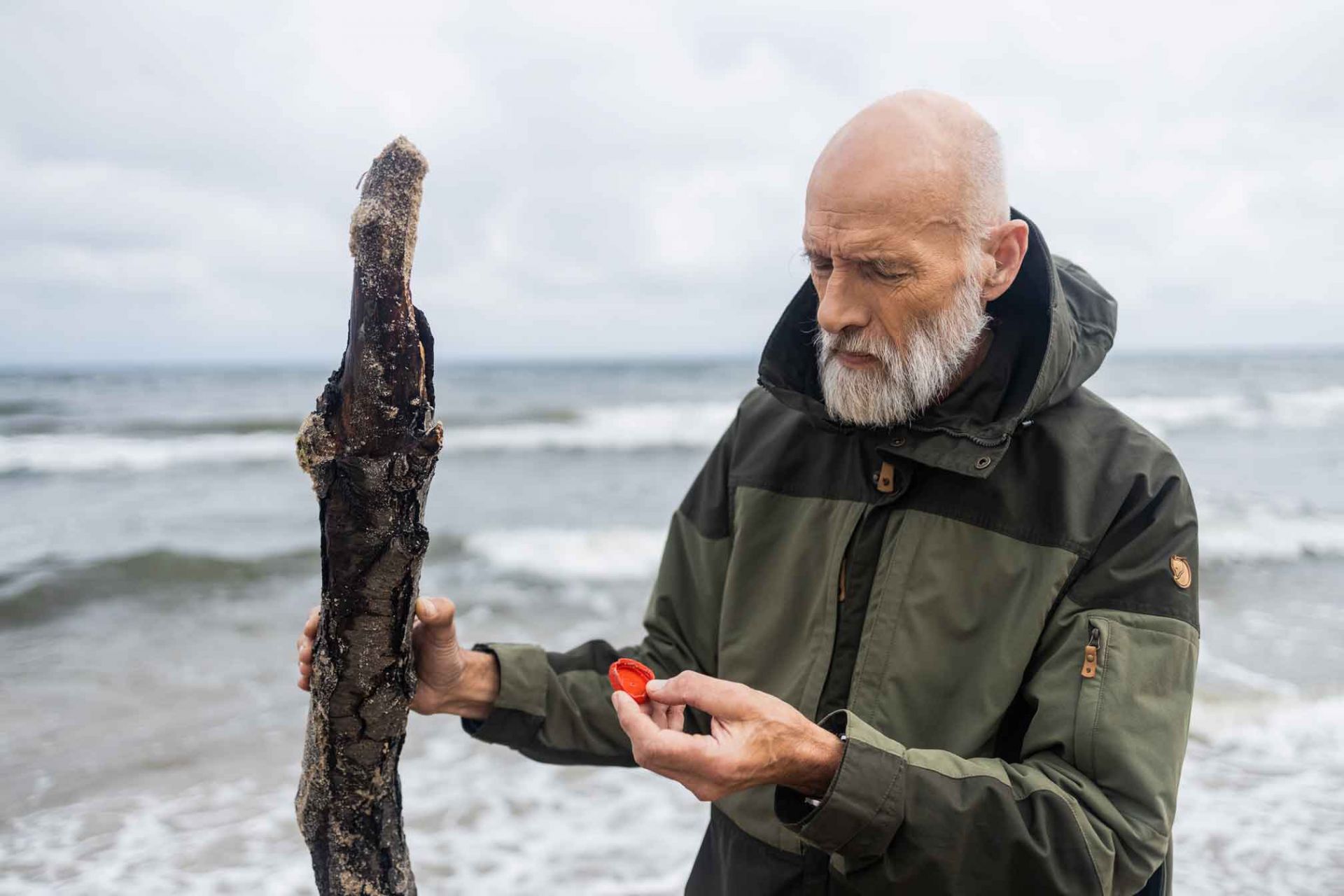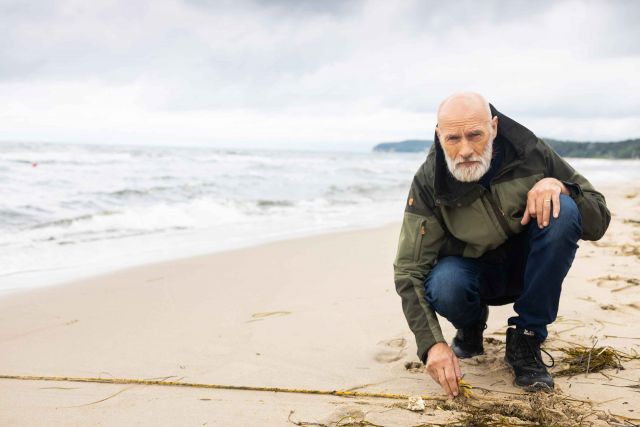Principal Investigator
:
Prof. Dr hab. Jan Marcin Węsławski
The Institute of Oceanology of the Polish Academy of Sciences
Panel: NZ8
Funding scheme
: DAINA 1
announced on
15 September 2017
The Arctic is the region hardest hit by global climate change; its effects can be observed not only as an increase in air and sea water temperatures, but also as the rapid meltdown of Arctic ice (glaciers and sea ice), which has, until recently, defined the most characteristic features of the Arctic ecosystem. These “natural” changes are now being exacerbated by a new phenomenon related to anthropogenic activity, i.e. plastic garbage floating on the surface of the ocean.
 Photo by Michał Łepecki
In the past, only wood would drift all the way from the estuaries of Siberian rivers to the coasts of the European Arctic. Accumulating on polar shores over centuries, these wood piles did not modify the local ecosystem in any novel way (all they did, after all, was drift over from another part of the Arctic). For centuries, Atlantic waters flowing up north along European coastlines carried larvae and adult animals, but only a small proportion of these made it all the way to the farthest north. In the 1970s, however, fisheries began to use plastic nets and boxes, and the industry started to inundate Europe with plastic packaging and containers. These almost indestructible, floating pieces of waste now serve as rafts on which adult animals of various southern species embark on a voyage across the ocean.
Photo by Michał Łepecki
In the past, only wood would drift all the way from the estuaries of Siberian rivers to the coasts of the European Arctic. Accumulating on polar shores over centuries, these wood piles did not modify the local ecosystem in any novel way (all they did, after all, was drift over from another part of the Arctic). For centuries, Atlantic waters flowing up north along European coastlines carried larvae and adult animals, but only a small proportion of these made it all the way to the farthest north. In the 1970s, however, fisheries began to use plastic nets and boxes, and the industry started to inundate Europe with plastic packaging and containers. These almost indestructible, floating pieces of waste now serve as rafts on which adult animals of various southern species embark on a voyage across the ocean.
 Photo by Michał Łepecki
The ADAMANT project sets out to show how the plastic waste that lands on its shores affects the ice cover of Spitsbergen and to determine which species most commonly use this form of transport (bivalves, crustaceans, polychaetes). Genetic studies suggest that incoming species arrive on Spitsbergen from different corners of Europe, including Iceland, Denmark and Scotland, and not only nearby Norway. The importation of southern species increases species diversity and the genetic diversity of local fauna. By comparing the earliest available satellite photos of the region (from the 1990s) with contemporary images, we also distinguished the sites where sea ice disappears from the coast completely from those where its retention period has just shortened. Thanks to the fact that our voyage on IOPAN OCEANIA in 1990 had allowed us to collect data on the benthic fauna of two bays located near glaciers, we were able to compare data from 30 years ago with new samples from the same sites. It turns out that the bay from which the glacier is slowly retreating has undergone significant changes over these past 30 years; both the quantity and diversity of its fauna has increased, while the other bay, which has experienced no such changes in ice cover (there was no ice there 30 years ago either), has remained almost completely unchanged.
Photo by Michał Łepecki
The ADAMANT project sets out to show how the plastic waste that lands on its shores affects the ice cover of Spitsbergen and to determine which species most commonly use this form of transport (bivalves, crustaceans, polychaetes). Genetic studies suggest that incoming species arrive on Spitsbergen from different corners of Europe, including Iceland, Denmark and Scotland, and not only nearby Norway. The importation of southern species increases species diversity and the genetic diversity of local fauna. By comparing the earliest available satellite photos of the region (from the 1990s) with contemporary images, we also distinguished the sites where sea ice disappears from the coast completely from those where its retention period has just shortened. Thanks to the fact that our voyage on IOPAN OCEANIA in 1990 had allowed us to collect data on the benthic fauna of two bays located near glaciers, we were able to compare data from 30 years ago with new samples from the same sites. It turns out that the bay from which the glacier is slowly retreating has undergone significant changes over these past 30 years; both the quantity and diversity of its fauna has increased, while the other bay, which has experienced no such changes in ice cover (there was no ice there 30 years ago either), has remained almost completely unchanged.
Our research is still in progress; the project was prolonged because of the pandemic, but we have already broadcast a movie to show our field work in the Arctic, and the results of our last publication have made the cut for a prestigious scientific press review.
Project title: Arctic benthic ecosystems under change: the impact of deglaciation and boreal species transportation by macroplastic (ADAMANT)
Prof. Dr hab. Jan Marcin Węsławski
Graduate of the first intake of the oceanography programme at the University of Gdańsk in 1975. He spent seven years working at the Hel Marine Station of the University of Gdańsk, and after his PhD defence, completed another year at the Institute of Geophysics of the Polish Academy of Sciences as the head of the Polish Polar Station in Hornsund. Since 1985, he has worked at the Institute of Oceanology of the Polish Academy of Sciences in Sopot – since 2018, as its director. He was awarded the title of professor in 2000. He has participated in polar and sea expeditions in the Arctic, including to Canada, Greenland, Spitsbergen and Franz Josef Land. Since the 1990s, he has been part of European teams tasked with marine biodiversity assessment. He has also participated in a 10-year Census of Marine Life programme. His research interests centre on the impact of climate change on marine ecosystems and the relationship between man and nature.


